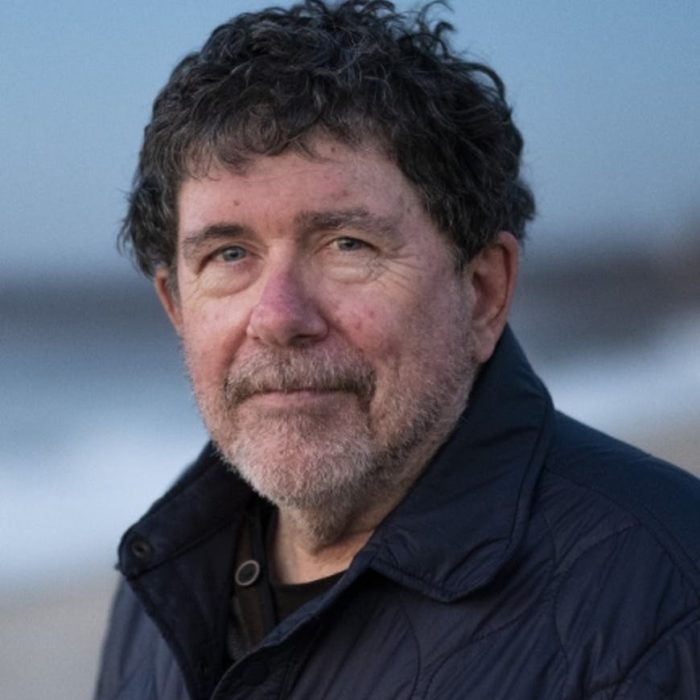by Tom Clavin
This year is the bicentennial of the Texas Rangers, who played a significant role in the bigger picture of what in the 1800s was viewed as law and order on the frontier. The initial Rangers “call to arms” by Stephen Austin in August 1823 came just two years after the establishment of the first Anglo colony in Texas, which was then a possession of Mexico. The following excerpt appears early in my book Follow Me to Hell, which is about the Texas Rangers and in particular Leander McNelly, one of its more revered captains.

This image is in the public domain.
The journey that would change Texas history began with the aptly named Moses Austin and his quest for a promised land. To understand the man who some called the “Father of Texas,” one should know about the father of the Father of Texas . . . who was a New Englander.
Moses was born to Elias and Eunice Phelps Austin in Durham, Connecticut, on October 4, 1761, representing the fifth generation of Austins in America. At 21, Moses chose not to follow his father as a tailor, farmer, and tavern keeper and instead he entered the dry-goods business in Middletown, also in Connecticut. Very soon, though, he moved to Philadelphia to join his brother, Stephen, who was in a similar occupation. There Moses met and married Mary Brown. The couple had five children, three of whom lived to maturity: Stephen, Emily, and James.
With entrepreneurial zeal, he moved to Richmond, Virginia, and established Moses Austin and Company. In 1789, he secured a contract to roof the new Virginia capitol building in lead. That the state promised to pay 5 percent above market price if the contractor used Virginia lead was a tipoff for Moses: He and his brother lost no time gaining control of Virginia’s richest lead deposit and founded Austinville in Wythe County. They brought experienced miners and smelters over from England. The brothers’ expertise and energetic leadership went a long way toward establishing the American lead industry.
However, when they encountered problems in financing their enterprise, Moses looked to the rumored lead deposits in Spanish Upper Louisiana for relief. After visiting the mines there, he obtained a grant to partner in a mine in what is now Potosi, Missouri, and in 1798, he established an Anglo-American settlement there, west of the Mississippi River.
Imbued with the New England Calvinist belief that to those most able to manage assets should go the lion’s share of them, Moses aggressively expanded his holdings. Using the efficient reverberatory furnace, he gained control of virtually all smelting in the region and amassed a bank account of $190,000, the equivalent then of being a multimillionaire today.
In the frontier settlement, Moses constructed, in the style of a southern mansion, an imposing home that he called Durham Hall. Offering gracious hospitality was helpful in winning the friendship of men in prominent positions. The governor of the territory, the future President William Henry Harrison, appointed Moses a justice on the Court of Common Pleas and Quarter Sessions for the Ste. Genevieve District. Moses joined others seeking to increase the money supply in circulation by founding the Bank of St. Louis. However, when it failed during the Panic of 1819, the consequences for Austin’s finances were severe.
With creditors beginning to hound him, Moses concocted a plan to create an American colony in Spanish Texas. Unlike previous adventurers, Moses was smart enough to realize an invasion was not the best way to go about it. In December 1820, accompanied by a slave named Richmond, Moses traveled south to seek permission to bring colonists in. But the request was rejected by Governor Antonio Maria Martinez, who, like many other officials in Mexico, was smarting over the recent intrusions by Anglos viewed as little more than vigilantes, or worse, usurpers.
Disappointed, and apparently with no Plan B, Moses was disconsolately walking across Military Plaza when he happened to encounter the Baron de Bastrop. For the future of Texas, this would turn out to be a fortuitous chance meeting.
The real name of the “baron” was Philip Hendrik Nering Bögel, and he was born on November 23, 1759, in Suriname. Five years later his parents and their children moved to the Netherlands where, when he was old enough, Philip joined the cavalry. However, instead of continuing a military career, at 22, he married Lady Georgine Wolffeline and they settled in Leeuwarden. Life was good for the charming young fellow—a noblewoman for a wife, blessed with five children, and holding a comfortable position as a tax collector.
That secure existence crumbled in 1793 when Philip was accused of using some of those taxes he collected for personal gain. He escaped arrest—bringing his stunned wife and children along—and the province put a reward of 1000 ducats on his head. The runaway family made their way to Hamburg where Philip assumed the identity of the Baron de Bastrop, and they booked passage on a ship to Philadelphia. They found a place to live in Frederick County, Maryland, but after a few years of not adapting to uncouth American ways, Bastrop’s wife and children returned to the Netherlands.
Where was a good place to start over? Texas, of course. After ventures in Louisiana that had him swaying between riches and poverty, the self-titled Baron de Bastrop was in San Antonio in 1806, introducing himself as having fled his home country because of its invasion by Napoleon’s French forces. People believed his accounts of noble origins and enjoyed his charismatic cosmopolitan ways, offering him opportunities to participate in various ventures. He took advantage of them, but grand living led to empty pockets once more. Undaunted, de Bastrop received permission to establish a colony near the Trinity River. This took root and four years later he was appointed second alcalde (mayor or chief judicial official) of the colony.
It was in this capacity in December 1820 that de Bastrop was in Mexico City. Serendipitously, he and Moses Austin had met years earlier when they had shared the hospitality of a roadhouse in then-Spanish Missouri. After de Bastrop heard the enthusiasm with which Moses spoke of his own colonization plan and how unceremoniously he had been dismissed by the governor, the baron revealed that he and Martinez were well acquainted. It would make sense for Moses and de Bastrop to team up on the settlement plan, so they returned to the governor’s office.
Coached by the more-cultured baron, Moses offered several reasons why a settlement of Anglos in Texas would benefit Mexico, including that the Anglos’ reputation as Indian fighters was well-deserved. Spanish authorities had been hard-pressed to protect Mexican residents in the area, so if a bunch of Americans wanted to risk their necks and take on the problem, they could have it. This time Governor Martínez endorsed and forwarded the plan to higher authority.
(As an aside: The Baron de Bastrop had only a few more years to enjoy the existence of the colony he helped establish. In 1823, he was elected to the provincial deputation of San Antonio, and the following year to the Legislature of Coahuila y Tejas, where he served until his death on February 23, 1827, age 67. Because de Bastrop did not leave enough money for his burial, the other legislators paid for it. In his will, he left land to his wife and children wherever they were in the Netherlands. It was not until well over a century later that the baron’s true identity was ascertained.)
The plan allowed for Moses to guide 300 families—only Catholic ones, he assured Martinez—from Louisiana to the mouth of the Colorado River where a settlement would be established. While Moses was enamored with the adventure of the entire enterprise, it was also his ticket back to financial health as each family would have to pay him a fee to be members of this new settlement.
Sadly for Moses, his personal health gave out before his ambitions did. Before the year had ended, he and Richmond were on their way home, but it was a nightmare of a journey—their horses and much of their supplies were stolen and various ailments ganged up on the 59-year-old Moses, the worst of them pneumonia from being subjected to the wear and tear of the trek’s wet and cold weather. Finally, in March 1821, he reached the home of his daughter, Emily Bryan, in Missouri. There would be no more Texas adventures for him.
In June, two days before he died, Moses called his wife to his bed. She reported in a letter, “After a considerable exertion to speak, he drew me down to him and with much distress and difficulty of speech, told me it was two [sic] late, that he was going.” His dying request was that his son Stephen would lead those who would be dubbed the “Old Three Hundred” to their new home in Texas. On the 10th, Moses Austin died.
He was buried in the Bryan family cemetery in Missouri. In 1831, the remains of both Moses and his wife were removed to a public cemetery in Potosi on land they once owned. In 1938, the State of Texas tried to move the remains to the State Cemetery in Austin but the effort was rebuffed. To be on the safe side, Missourians had the grave covered in concrete to thwart future efforts by Texans to excavate it.
Originally published on Tom Clavin’s The Overlook.

Tom Clavin is a #1 New York Times bestselling author and has worked as a newspaper editor, magazine writer, TV and radio commentator, and a reporter for The New York Times. He has received awards from the Society of Professional Journalists, Marine Corps Heritage Foundation, and National Newspaper Association. His books include the bestselling Frontier Lawmen trilogy—Wild Bill, Dodge City, and Tombstone—and Blood and Treasure with Bob Drury. He lives in Sag Harbor, NY.

